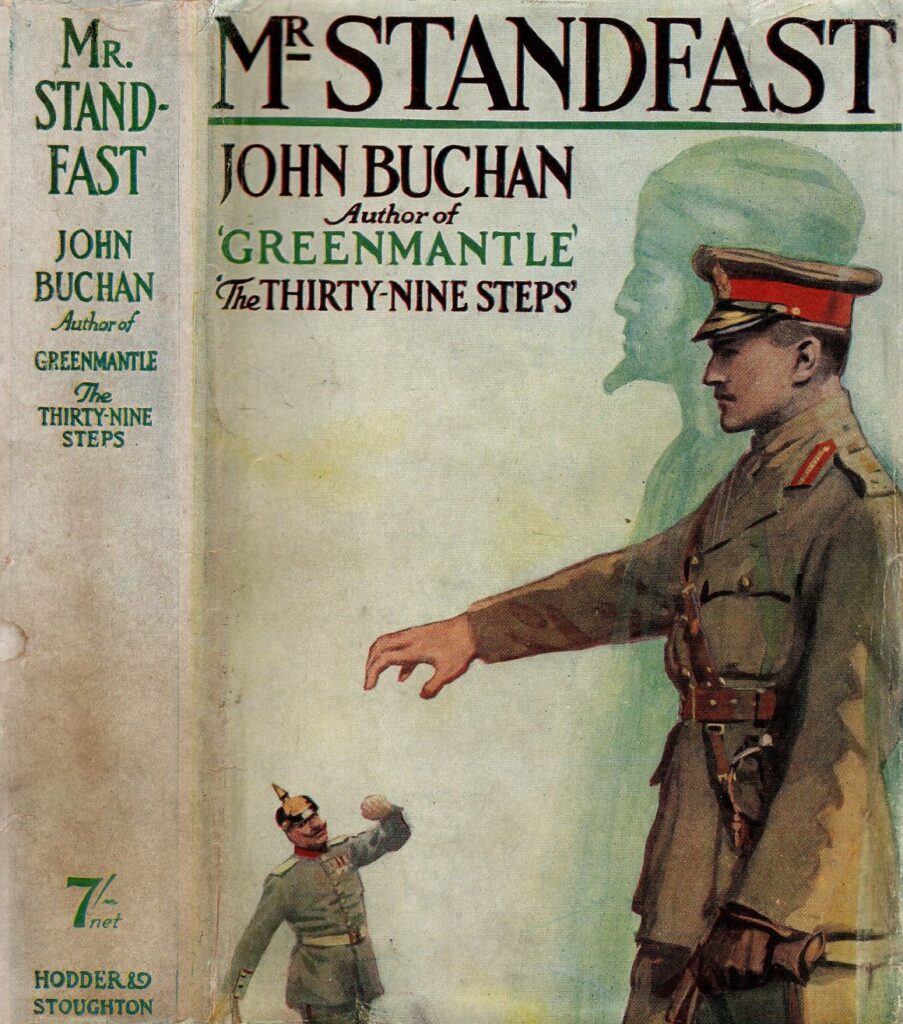Mr Standfast
With The Thirty-Nine Steps (1915) and Greenmantle (1916) this novel makes the third of a trilogy on aspects of the First World War. Buchan’s History of the War afforded him inside knowledge that fed his novels with realism, to which he added the spice of imagination. (In 1917 he was Director of the Department of Information, in 1918 Director of Intelligence in the Ministry of Information.)
His tale moves swiftly. The scene changes purposefully through London, a fictional Home Counties location, Glasgow, the Highlands and Islands, and Switzerland to prepare the way for a climax in the great German offensive of March 1918 – Ludendorff’s last, almost successful gambler’s throw.
Buchan’s description of the accompanying artillery barrage is ominously and compellingly realistic: you hear the low thunder of the encroaching guns. And the allied trenches provide a dramatic setting for the death of the spy hunted by Richard Hannay and his little team of counterspies.
The threat from pacifism which was a genuine feature of the war years gives the spy his cover; there is a space for Red Clydeside; the submarine menace is used in an unexpected way; some Highland local colour is apt for the period but also for the people described; and generally the characters present a wide spectrum of wartime life.
Hannay has something of the now conventional amateur who beats the professionals at their own game. The spy’s identity may well be based on someone involved in a scandal that affected the Kaiser’s entourage. There is a sympathetic portrait of a conscientious objector. An American character already in Greenmantle, John Scantlebury Blenkiron, is perhaps the author’s way of saying ‘Come over and help us’ – which had to wait for the sinking of the Lusitania and the Zimmermann telegram for its realisation. The young, clever and effective female agent, Mary Lammington, makes up for the (sometimes needlessly lamented) virtual lack of women in The Thirty-Nine Steps. Not least we have the war in the air: a newcomer, Archie Roylance, will reappear in Buchan’s later novels. South Africa, recalling Buchan’s spell there at the beginning of the century, is represented by Peter Pienaar, who already figured in Greenmantle and much more briefly in The Thirty-Nine Steps.
Two idealistic themes inform the story: Peter Pienaar’s call for fortitude, andJohn Bunyan’s The Pilgim’s Progress. The Allied triumph through faith and persistence, against heavy odds, is also the recipe for the individual’s triumph against despair.
J C G Greig
Audio version, Librivox: https://archive.org/details/mr_standfast_1203_librivox
BBC radio adaptation by Bert Coules, https://archive.org/details/john-buchan-mr-standfast
Available to read at https://www.gutenberg.org/cache/epub/560/pg560-images.html

